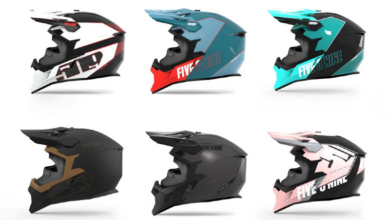Yamaha: Sales are Strong but Supply is Tight
Bob Starr, manager of corporate communications at Yamaha Motor Corporation, says that things are going well for the OEM and its dealers, but he notes that the company is walking a fine line between maximum profitability and lost sales.
“Overall, things are very good,” Starr told Powersports Business recently, “but supply is just a little bit too tight for us and for our dealers. We’re doing everything we can to improve that.”
“But with tight supply, we’re walking a fine line of dealers remaining quite profitable on every motorcycle and ATV they sell, with very minimal floor plan charges and very maximum profit from retail sales. We certainly realize supply is on the tight side and we are losing sales in both motorcycle and ATV.”
Starr said the short inventory isn’t a parts supply or production problem, it’s based upon inventory management, product demand and delays at the port of Long Beach, Calif., where the bulk of Yamaha’s machines arrive in the United States.
Increased shipping from Asia and tight labor conditions on the docks are backing up ships at the Long Beach port. Container imports at Long Beach have jumped 25% during the July – September period compared to the same time last year, according to one report. It reportedly now takes seven days to unload a ship in Long Beach, about five days longer than normal.
“We’re working through this,” says Starr, “and it will improve quite a bit as we near the holidays.”
Yamaha’s sales for the model year ended Aug. 31, were up, says Starr. ATV unit sales for the industry were up about 2% year to date.
Inventories at Yamaha are in good shape, says Starr without providing specific numbers. “Yamaha arguably is in the best shape (inventory-wise) in the industry,” he says. “We have less units in the pipeline. It’s dramatically better than last year.”
One reason why Yamaha products are in high demand, according to Starr, is the company’s fall retail finance promotion that basically applies across the board to most Yamaha models. “It’s been very well received by dealers and consumers because it’s simple and easy to understand,” he says.
The promotion, that is outlined for dealers and consumers on Yamaha’s Web site, has been running since Sept. 1. It applies to motorcycles, ATVs and snowmobiles. Yamaha is offering 3.9% financing and up to $200 cash back on certain models.The proof of the program’s success can be measured in the fact that the amount of products financed “is way up,” according to Starr.
Dealers are confident about both ATV and motorcycle sales as the season winds down toward the holidays, Starr says.
At the same time, Yamaha is seeing “strong
consumer acceptance” to its line of four-stroke snowmobiles. “The interest at consumer shows has been tremendous,” says Starr. “It’s almost a lightening bolt of optimism.”
Retail sled sales since spring are about 150% of last year’s sales, he said.
Sales of Yamaha’s popular Rhino side by side utility machine are very strong. “We can’t supply enough (units) here,” says Starr. “The Rhino is probably the extreme case of not being able to supply product. The dealers are experiencing tremendous profitability out of Rhino. The dealers have found that the Rhino, like our line of Star motorcycles, is easy to personalize. That’s been a tremendous boon to dealers and to us. The accessories have far exceeded our expectations.”
Industry perspectives
Yamaha sees continued growth in both ATVs and motorcycles. “Overall,” says Starr, “motorcycle (industry) sales will continue a slight upward trend. We’ll finish close to 1 million units, or maybe even break that, this year. That’s a great reason for optimism.
“ATVs are (showing) a little bit less of an increase than motorcycle, but we have to be thankful we’re at such high levels right now.”
Starr says he expects Yamaha’s simplicity promotions to continue through the spring selling season. “We would anticipate spring retail for both categories (ATV and motorcycle) to be very strong,” he says.
Look for more promotions from other OEMS as well since the business has become so promotion-driven. Interest rates will affect specifics of new promotions, but Starr notes that GM is now offering to hold the line on rates if you trade in your new vehicle on another GM machine.
Yamaha doesn’t have any plans for surcharges in the immediate future. It’s trying to maintain a competitive position on pricing, says Starr, but its MSRP have been edging up recently. MSRP on Yamaha’s 2005 models generally are up 3% or 4% across the board. For example, the YZF-R6 that was priced at $7,999 in 2003, carries an MSRP of $8,399 for 2005.
This year has been good for Yamaha, but next year could be even more exciting. It’s Yamaha’s 50th anniversary as a motorsports company and Starr says, somewhat coyly, that the company “has some special things we are working on.” Given Starr’s penchant for showmanship, that could be exciting to see.

